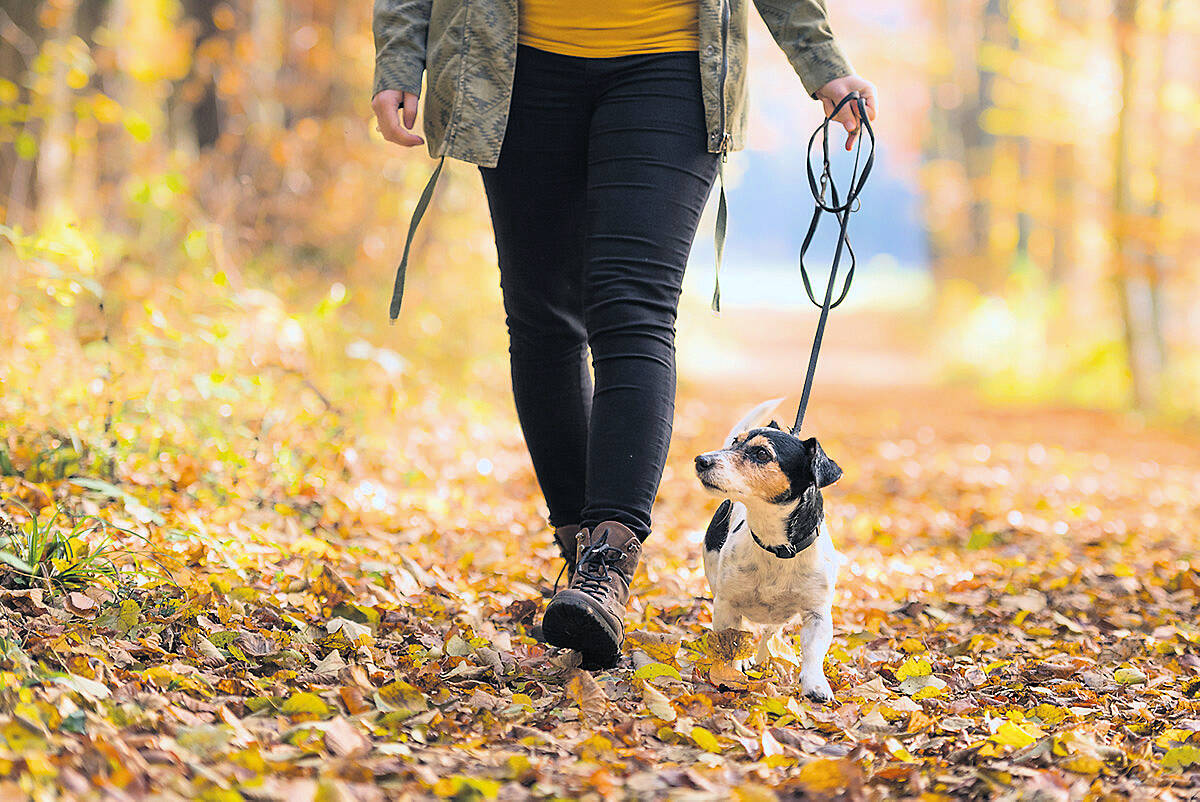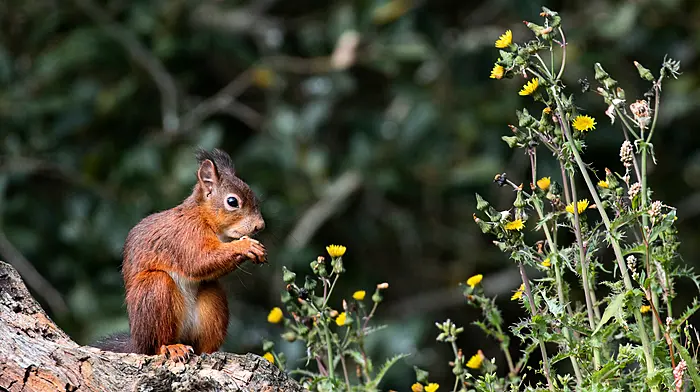It’s the time of year we all need some cheer, so we asked our columnists for their top happiness tips. They’ve come up trumps with everything from draping our homes in pretty fairy lights, to forest bathing, feelgood nutrition, and spicing up our food.

Channel the power of positivity
By Linda Hamilton
1. Do the hard thing. Why would doing the hard thing boost your mood? Because the most immediate way to enact positive change is to take direct action, to ‘just do it’. I often talk about the three Ps that get us into trouble – perfectionism (“I’ll wait until it feels right”), procrastination (‘not now, maybe later...’), which leads to paralysis and avoidance/shutdown. All this leaves you shouldering burdensome feelings of guilt and self-blame. Taking direct action – aiming to ‘just do it’ – is a better, empowering approach. Send that email now, start that science project, make the awkward phone call. Spare yourself the self-critical autopsy (‘I’m useless, I’ll never change’). Convert “I can’t” to “I did”. It feels good.
2. Catch those thought gremlins. The deceptively simple message at the core of CBT is that it’s not so much people or things that upset us; it’s the meaning we give to them. Yes, you got angry and this proves you are a TERRIBLE person. Yes, the weather is AWFUL and the traffic is BRUTAL and your work deadline is late and that CAN’T happen. Life SUCKS. Look at those meanings. Are these evaluations absolutely accurate? Perhaps a tad harsh or dramatic? A willingness to objectively appraise your judgements will help alleviate persistent, intense negative feelings.
3. Get out in nature. Engage in some activity like walking or jogging and get out in nature. Engage your senses – the crimson carpet of leaves underfoot, the burnt-out scent of chimney smoke on frosty mornings. Add some rituals to enhance and help you savour the experience; compile a play-list of songs, organise a socially distanced stroll with a pal, bring along Susie the dog. Your mind will undoubtedly wander to the checklist of daily chores, but that’s OK. Accept these minor disruptions and re-direct your attention to the present moment.

A little glee in the garden
By Joyce Russell
1. Get togged up and head outdoors. Take a cup of something nice. Start a slow-step walk around the garden and look at everything. You are only looking for positives! Count the number of different flowers you see (weeds and wildflowers count too so don’t ignore a daisy) or the number of different things to eat. Sit for a while, if the weather permits, take a few deep breaths of air and think how wonderful it is to have your garden space. Remember what it looked like in summer (or look at photographs) and picture what it will look like next year. Give yourself a big pat on the back – whatever your garden, you have done something special with your patch on the earth.
2. Treat yourself to a new garden book. You deserve a feeling-good-about-gardening present and don’t have to wait for Christmas.
You might like to look at beautiful garden designs or learn more about roses, how to make good compost, grow in a greenhouse, or how to grow pumpkins.
Take a look at some of the inspiring offerings. This is a perfect time to sit and soak up some new ideas about gardening. And remember to support local bookshops if you possibly can – some may do order and collect if you phone and ask.
3. Even if you don’t have a garden you can buy a new houseplant or grow some bulbs. There’s still time to put a few daffodil, iris, allium, and tulip bulbs in pots, and put them to grow near a house wall. Maybe you bought bulbs already and didn’t get round to planting them.
Or maybe you’ll still find some in a shop or order a few online. It doesn’t take much time to fill a pot with compost and push some bulbs in. The rewards are so exciting when you see the first shoots, then flowers coming out next spring.

Grab good mood food
By Majella O'Neill
1. Get vitamin light. Light balance is one of the health challenges of the 21st century – not getting enough of the “right” light at the “right” time and too much of the “wrong” light at the “wrong” time. Get that vital vitamin light during the day by wrapping up, going outside and spending some time in daylight, hail rain or shine every day if possible. To maintain balance in these vital hormones, avoid bright light and back-lit screen in the late evening. Dim lights in the house or wear light filtering glasses
2. Ensure you eat enough protein foods such as eggs, turkey, chicken, fish, legumes, dairy products, meat nuts and seeds. They provide amino acids, such as tryptophan which are the precursors to brain neurotransmitters such as serotonin, which impact mood, motivation, pleasure/pain response, sleep and stress response. Also keep your gut microbes (which manufacture neurotransmitters) happy by feeding them with a variety of colourful, high-fibre foods and having lots of fermented foods.
3. Keep your blood sugar balanced. Fluctuating blood sugar makes us irritable, cranky (‘hangry’) and causes us to release stress hormones (cortisol). Limit refined, high carbohydrate meals which can cause blood sugar swings and dips. Have three, well- balanced meals every day, with a good proportion of protein, healthy fats and high-fibre wholegrains, vegetables and fruit. Eating this way gives a more sustained, balanced release of energy with a subsequent balance of stress hormones and mood Warming, flavoursome foods that are bursting with colour, aroma and taste evoke feelings of comfort and contentment. Using herbs and spices like ginger and turmeric not only adds flavour, warmth and colour but have an antioxidant and anti-inflammatory effect on our nervous system. Being proactive about your physical and mental health is empowering and is key to navigating the challenge of winter in the northern hemisphere during a pandemic.

Meet with Mother Nature
By Terri Kearney
1. Feeding our garden birds at a time when they are not preoccupied by breeding is even more rewarding as there is time for more prolonged encounters. A lot of the smaller-sized species form flocks in winter and the interactions between them are truly fascinating to watch too. Every morning, the first thing I see when I open my bedroom curtains is a little ‘family’ of house sparrows and tits sitting patiently on the branches, awaiting their breakfast. Approaching the feeders a few little ‘ceeps’ are emitted and, at the pop of the feeding bucket lid, I’m surrounded by a flurry of wings and excited calls. What a great way to start the day. Then we have the winter migrants, the beautiful redwing arriving from cold climes in their droves, sometimes alongside its thrush cousin, the fieldfare. And a cold snap also brings the dramatic glossy plumage of the migrant blackbirds that seek refuge in our gardens. There are hours of entertainment to be had observing these beautiful creatures interacting and feeding in close proximity to us.
2. Tree profiles against winter skies are another blessing in winter. Some are poised and elegant, others miracles of balance, while many more tell a tale of tortured endurance through their wind-shaped shapes. We are surrounded by these beautiful, living sculptures and there is nothing more calming than a ‘forest bathing’ winter walk amongst trees to soothe the soul.
3. Starlings are known for their incredible synchronised flying in large groups known as murmurations, but they are certainly not the only birds to perform in this way. The winter waders that come to our shorelines regularly take off en-masse, in varying species groups which are dazzling in their complexity. With the added attraction of a dramatic soundtrack, these aerial displays are both beautiful and compelling to watch. Regular ‘shows’ coming soon to a bay near you ... and all free of charge.

Get motivated and moving
By Paudie O’Donovan
1. Nothing will benefit you more right now than exercise. Given the time of the year, it might be a struggle to get out of the house but if you take that step you will reap the rewards. Get out and go for that walk, jog, cycle, whatever you’ll enjoy. Just go far enough to get some fresh air in your lungs and enough space to clear your head. I promise you will feel better afterwards. You can also exercise indoors by doing a stationery bike or a HIIT class, but to be honest you can’t beat the great outdoors. Plan your activity, dress appropriately and off you go. No excuses.
2. Having a training partner is crucial and makes you accountable. Organise to meet some one if you are going to go for a walk or cycle. There’s nothing like a good chat to get things off your chest and you never know, maybe the person you are with might need to offload too. Covid-19 is putting a lot of extra stress on people and a good chinwag might help. Message this person and use this partnership as a motivational tool to get you out of the house. It mightn’t necessary be a walk. It could be a gym session in your garage or a swim. Go ahead and send that text.
3. Hydration is so important, and not just when you exercise. The tiredness you’re feeling on a daily basis might not be caused by the bad night’s sleep that you had last night. It could simply be because you’re not drinking enough of water. I advise that you should drink one pint of water as soon as you get up in the morning. It’ll set you up for the day. Be careful with coffee and tea. You could be drinking five to six cups throughout the day and because they’re diuretic and make you go to the loo more, in theory you could end up a little dehydrated. Also if you take 1-2 spoons of sugar in these cups that’s 12 spoons a day on top of all the sugar that’s in the everyday food we eat.

Cocooning in cosy comfort
By Lauraine Farley
1. Bring the outdoors in. Twigs, branches, ferns, leaves, pinecones, berries, or anything else you can find in your yard or on a forest walk, can be brought inside, placed in vases, painted if you wish, and used as simple decor pieces, such as a delicate wreath of dried leaves, so beautiful.
2. Burn some candles. Scented or unscented, simple candle holders or artistic ones, no matter how you include them in your home, candles cozy up your spaces and welcome the crisp season. If you prefer not to use an open flame, lanterns work a treat or battery operated candles are also very effective, or even consider fairy lights. Draped over a mirror they look gorgeous.
3. Infuse your home with essential oil and room scents. Or make your own with:
• 2 cups of water
• cinnamon sticks
• One small pumpkin
and an apple
• Fallen leaves
• 1/2 cup vodka
• 1/2 tsp baking soda
Method:
1. In a medium saucepan, combine the water with some pieces of pumpkin rind (only the rind) that are cut into smaller pieces. Add in the cinnamon sticks and cut up leaves.
2. Bring to a boil, then simmer for 3 or so hours. Turn off the heat, and let it sit overnight at room temperature.
3. To make an air freshener, odour eliminator, combine 1 cup of strained autumn mixture with the 1/2 cup of vodka and 1/2 tsp baking soda. Shake it up and use around the house. As this is mainly water, make sure to not spray directly on items since it will leave water droplets.








